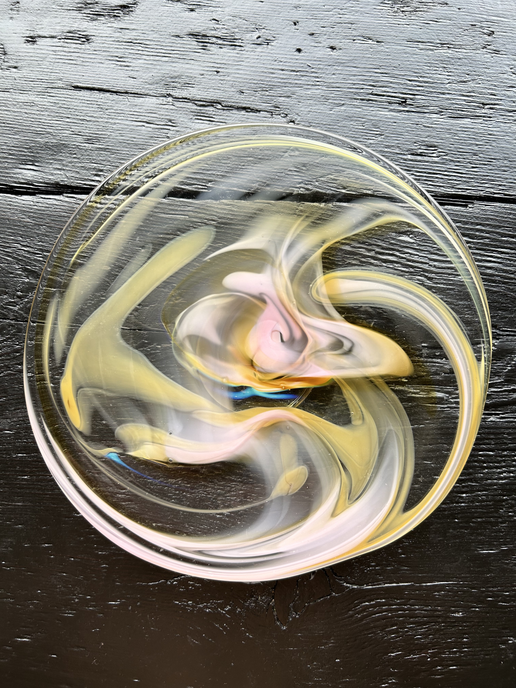 Image 1 of 1
Image 1 of 1


The Oxford Companion To Cheese
Fun fact - Bloomy owner Jessica is a contributing author to this book!
The discovery of cheese is a narrative at least 8,000 years old, dating back to the Neolithic era. Yet, after all of these thousands of years we are still finding new ways to combine the same four basic ingredients - milk, bacteria, salt, and enzymes - into new and exciting products with vastly different shapes, sizes, and colors, and equally complex and varied tastes, textures, and, yes, aromas. In fact, after a long period of industrialized, processed, and standardized cheese, cheesemakers, cheesemongers, affineurs, and most of all consumers are rediscovering the endless variety of cheeses across cultures.
The Oxford Companion to Cheese is the first major reference work dedicated to cheese, containing 855 A-Z entries on cheese history, culture, science, and production. From cottage cheese to Camembert, from Gorgonzola to Gruyère, there are entries on all of the major cheese varieties globally, but also many cheeses that are not well known outside of their region of production. The concentrated whey cheeses popular in Norway, brunost, are covered here, as are the traditional Turkish and Iranian cheeses that are ripened in casings prepared from sheep's or goat's skin.
There are entries on animal species whose milk is commonly (cow, goat, sheep) and not so commonly (think yak, camel, and reindeer) used in cheesemaking, as well as entries on a few highly important breeds within each species, such as the Nubian goat or the Holstein cow. Regional entries on places with a strong history of cheese production, biographies of influential cheesemakers, innovative and influential cheese shops, and historical entries on topics like manorial cheesemaking and cheese in children's literature round out the Companion's eclectic cultural coverage.
The Companion also reflects a fascination with the microbiology and chemistry of cheese, featuring entries on bacteria, molds, yeasts, cultures, and coagulants used in cheesemaking and cheese maturing. The blooms, veins, sticky surfaces, gooey interiors, crystals, wrinkles, strings, and yes, for some, the odors of cheese are all due to microbial action and growth. And today we have unprecedented insight into the microbial complexity of cheese, thanks to advances in molecular biology, whole-genome sequencing technologies, and microbiome research.
The Companion is equally interested in the applied elements of cheesemaking, with entries on production methodologies and the technology and equipment used in cheesemaking. An astonishing 325 authors contributed entries to the Companion, residing in 35 countries. These experts included cheesemakers, cheesemongers, dairy scientists, anthropologists, food historians, journalists, archaeologists, and on, from backgrounds as diverse as the topics they write about. Every entry is signed by the author, and includes both cross references to related topics and further reading suggestions. The endmatter includes a list of cheese-related museums and a thorough index. Three 8-page colour inserts and well over a hundred black and white images help bring the entries to life. This landmark encyclopedia is the most wide-ranging, comprehensive, and reliable reference work on cheese available, suitable for both novices and industry insiders alike.
Fun fact - Bloomy owner Jessica is a contributing author to this book!
The discovery of cheese is a narrative at least 8,000 years old, dating back to the Neolithic era. Yet, after all of these thousands of years we are still finding new ways to combine the same four basic ingredients - milk, bacteria, salt, and enzymes - into new and exciting products with vastly different shapes, sizes, and colors, and equally complex and varied tastes, textures, and, yes, aromas. In fact, after a long period of industrialized, processed, and standardized cheese, cheesemakers, cheesemongers, affineurs, and most of all consumers are rediscovering the endless variety of cheeses across cultures.
The Oxford Companion to Cheese is the first major reference work dedicated to cheese, containing 855 A-Z entries on cheese history, culture, science, and production. From cottage cheese to Camembert, from Gorgonzola to Gruyère, there are entries on all of the major cheese varieties globally, but also many cheeses that are not well known outside of their region of production. The concentrated whey cheeses popular in Norway, brunost, are covered here, as are the traditional Turkish and Iranian cheeses that are ripened in casings prepared from sheep's or goat's skin.
There are entries on animal species whose milk is commonly (cow, goat, sheep) and not so commonly (think yak, camel, and reindeer) used in cheesemaking, as well as entries on a few highly important breeds within each species, such as the Nubian goat or the Holstein cow. Regional entries on places with a strong history of cheese production, biographies of influential cheesemakers, innovative and influential cheese shops, and historical entries on topics like manorial cheesemaking and cheese in children's literature round out the Companion's eclectic cultural coverage.
The Companion also reflects a fascination with the microbiology and chemistry of cheese, featuring entries on bacteria, molds, yeasts, cultures, and coagulants used in cheesemaking and cheese maturing. The blooms, veins, sticky surfaces, gooey interiors, crystals, wrinkles, strings, and yes, for some, the odors of cheese are all due to microbial action and growth. And today we have unprecedented insight into the microbial complexity of cheese, thanks to advances in molecular biology, whole-genome sequencing technologies, and microbiome research.
The Companion is equally interested in the applied elements of cheesemaking, with entries on production methodologies and the technology and equipment used in cheesemaking. An astonishing 325 authors contributed entries to the Companion, residing in 35 countries. These experts included cheesemakers, cheesemongers, dairy scientists, anthropologists, food historians, journalists, archaeologists, and on, from backgrounds as diverse as the topics they write about. Every entry is signed by the author, and includes both cross references to related topics and further reading suggestions. The endmatter includes a list of cheese-related museums and a thorough index. Three 8-page colour inserts and well over a hundred black and white images help bring the entries to life. This landmark encyclopedia is the most wide-ranging, comprehensive, and reliable reference work on cheese available, suitable for both novices and industry insiders alike.








